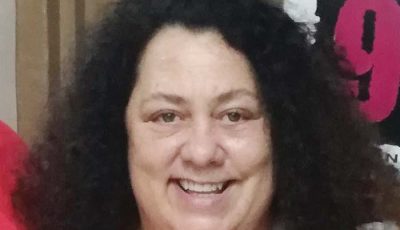Teachers get real about their new normal: Remote teaching
CNMI teachers and educators found themselves faced by a different challenge this school year—remote teaching while also making sure to sustain student learning. That new normal in the time of the COVID-19 pandemic had many teachers scrambling to teach themselves the ins and out of internet technology and execute effective and creative ways to teach their students online. Weeks after classes started, the process is still not easy, with both teachers and students still getting accustomed to their new classrooms and their new teaching aide called “technology.”
Dan Wollak, a teacher at Marianas High School, appreciates that students have been very understanding of the situation. “Teaching online has been extremely challenging but students have been very understanding and teachers are trying to do the best they can despite the difficult circumstances. Over the month of August, the Public School System Distance Education team taught the rest of PSS teachers how to use the online learning platform Blackboard and my teacher, who happens to be my wife, Ferleen, did an awesome job of thoroughly teaching me the platform and helping me get comfortable with the features,” he said.
“My first day teaching an online class was the most nervous I have ever been as a teacher.” He described it as a “different feeling” compared to standing in front of a physical class and introducing yourself on the first day. “With each day I have become more comfortable with it and my students have as well,” he added.
Wollak admits that reaching every student virtually has many ups and downs. “…To this day, many of my students don’t want to turn on their cameras or their audio. Sometimes, I will ask a question that they are supposed to respond to and some of my students who are logged on don’t respond at all, which tells me they are online but not paying attention,” he said. “Another difficulty is the fact that the first couple of weeks we weren’t teaching our subject area but focusing on social and emotional learning. Not only are we trying to get comfortable with online teaching but we are teaching a subject area that is not our primary content.”
“The biggest challenge is for our students who do not have laptops or tablets or don’t have internet. We were able to check out laptops for students but our supply ran out quickly. …Students without internet are getting paper packets for their curriculum, while they wait on receiving WiFi’s. I worry that learning from a packet isn’t nearly as effective as taking an actual class,” he added.
Despite all this, Wollak believes in the power of the community. “We will get through this but we need everyone’s support to make meaningful learning possible. One way is to donate your old electronics to those in need. Second, open up your homes to your children’s friends without internet and, third, check on your children and make sure they are engaged in their classes,” he said.
“Be supportive of us teachers as we navigate these new waters, trying to make learning as meaningful as possible. I look forward to the day I get to see my students face-to-face again. The last time I taught my students in person was on March 13. I know this because this was also the last time I shaved. I will shave again when we resume face to face instruction,” he added.
Rhonda Gross, a teacher at San Vicente Elementary School, said she and other teachers are concerned about the welfare of their students under the new system of remote teaching and learning. “…We think about the quality and fidelity of our students’ education, especially the lack of physical interaction in the elementary level, so we try our best to make it effective as possible. We make ourselves always accessible for both parents and students as we have been meeting and preparing bi-weekly remote learning packets for our students,” she said. “The LP’s were distributed physically and digitally. …During the orientation, teachers welcomed families to the new school year and informed them of what to expect moving forward. We are in constant communication with families via phone or email. This way, our students have continued education,” she added.
Gross said her current challenge is reaching parents whose child’s registration is not completed yet. “Parents and the community can help by getting in touch with the schools, always check for updates on the Facebook page of their child’s schools and, please, do not hesitate to communicate with your child’s teacher. We thank the parents for taking time out of their busy schedules to get oriented and bringing their child to take their STAR assessments, which is important.
“Parents should know that submitting their child’s learning packets is important and the LP No. 2 is due on Oct. 5,” she added.
Adam Walsh, a professor at the Northern Marianas College, said that education should never stop despite the pandemic. “Technology is great as it has done so much for us over the last decade or more in education to prepare our youth for the future and how tech continues to adapt, evolve, and proliferate in many job fields and other opportunities. …Due to technological advancements in video conferencing, Learning Management Systems (like Moodle and Blackboard), and other virtual environment features allow educators to reach students efficiently and effectively. We are lucky to have the infrastructure on such a remote place as the CNMI to conduct online learning for 10,000+ public, private, and college-level student body.”
He concedes, though, that “just because we are lucky in this regard doesn’t mean everything is okay or simply fine. We are all not fine.” Walsh said it would be ignorant to think that families on the islands can manage the struggles this pandemic has caused: massive unemployment, lack of resources, inequity, and so much more.
“We aren’t alone in this struggle as the U.S. mainland and other areas continue to feel the full force of lockdowns, increased COVID-19 case numbers, hospitalizations, deaths, and the aftermath of having to deal with all of these things on a daily basis.
“We also forget that learning is as much social as it is intellectual. I am at my best in a classroom, walking around to different groups during a discussion, interacting with the technologies available but, most importantly, being there physically for my students. We can’t replace what it means to be human with a computer screen or smartphone and we shouldn’t. We should, however, understand these limitations and do our best to work together and that is how we get through this dark time. Empathy today will build a better community tomorrow, and tomorrow is all we have,” he added.
Ajani Burrell, a teacher at the Northern Marianas College, said the primary challenge of teaching remotely is to look for ways to keep students engaged “particularly when they’re working asynchronously. I suspect this is a challenge for teachers across all levels of education. Given the remote dynamic, it also difficult at times to gauge students’ understanding or solicit feedback from them. Of course, the third challenge is access to the technology that makes remote learning possible, and the space/environment to allow for productive learning.”
At a virtual meeting early this month, Dr. Bobby Cruz, Public School System Instructional Technology director said that remote teaching and learning are the only way to go for student’s continued education at this time of the pandemic, particularly since the students’ education, safety, and wellbeing are the priority.
“That is why the primary method that we will use is remote learning. …Remote learning provides an opportunity for students and teachers to stay connected and engaged while working in different locations,” he said.
“This was not an easy shift. …I was actually fearful that it will not take off but the four weeks of training have been positive. …If you personally know our teachers, please commend them. Our classroom teachers have done an extraordinary job of using the ‘why’ they serve as educational professionals to help them overcome the many hurdles that accompany this shift to remote learning.”





























